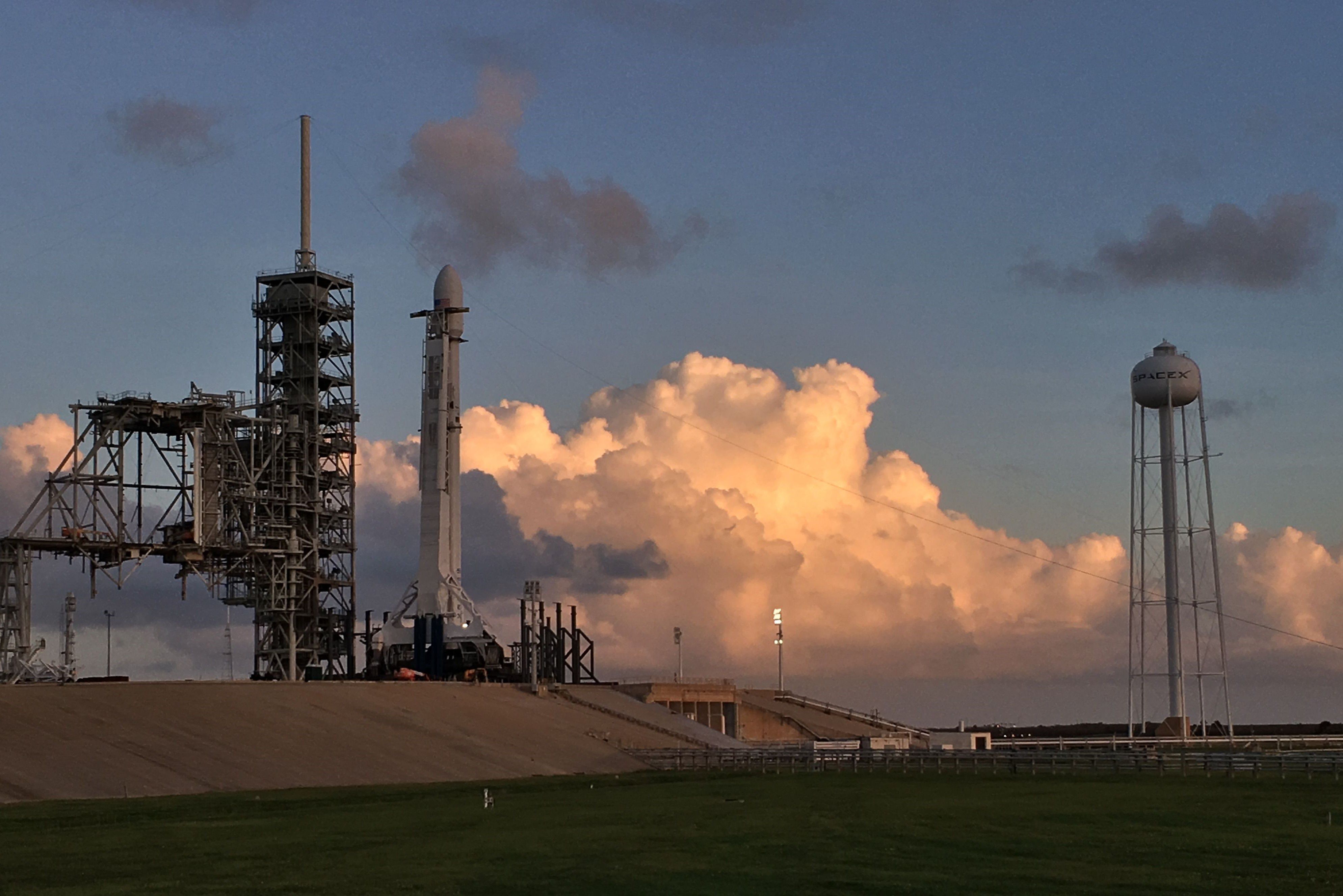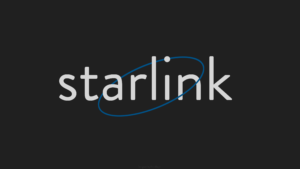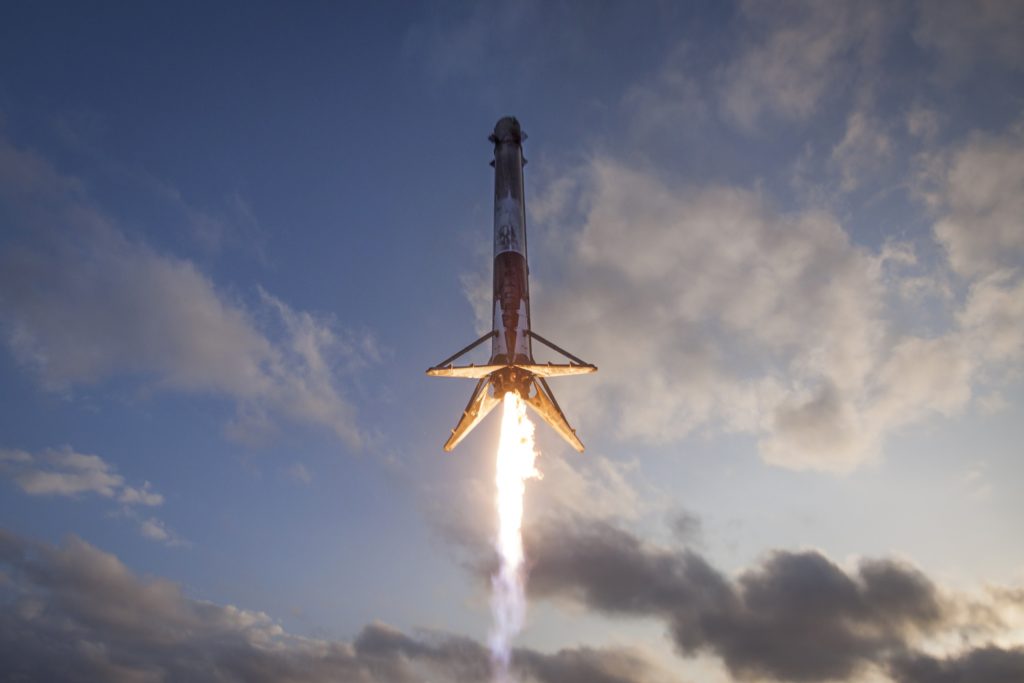

News
SpaceX could provide satellite broadband service as early as 2020
Patricia Cooper, SpaceX’s VP of Satellite Government Affairs, provided a statement to the Senate Committee on Commerce, Science, and Transportation regarding SpaceX’s broadband satellite constellation ambitions.
Of note, Cooper reiterated on Wednesday that SpaceX intends to launch two prototype satellites into orbit within the next few months, and further suggested that an operational Starlink launch campaign is tentatively scheduled to begin in 2019. She also noted that the company’s initial ~4000 satellite constellation is meant to be launched over a space of five years, with limited service beginning in 2020 or 2021 once ~800 satellites have been placed in Low Earth Orbit (LEO).
While officially unconfirmed, FCC filings have for several months suggested that SpaceX was hoping to launch its first prototype communications satellites relatively soon, and Cooper’s comments indicate that those prototypes will be launched in late 2017 or early 2018. According to those documents, the reported orbit of SpaceX’s prototype Microsats fits perfectly with the planned orbit of PAZ, a Spanish Earth imaging satellite, which is scheduled for launch from Vandenberg Air Force Base, CA on January 30 2018.

SpaceX’s Starlink satellite constellation efforts could provide the company with valuable experience that can be applied around Mars. (unofficial logo by Eric Ralph)
More experimental satellites are likely to follow the launch of Microsat 2A/2B, although SpaceX’s aggressive technology development strategy could preclude future experimental launches if all goes as planned. If SpaceX hopes to begin operational launches by 2019 and launch ~800 satellites no later than 2021, the company will have to both settle on a finalized design and rapidly expand its satellite manufacturing capabilities in the near term.
Nevertheless, Cooper unambiguously stated that SpaceX is not currently pursuing outside investment for Starlink research and development. This suggests the company is relatively confident in its near and long term strategies for rolling out its satellite broadband constellation, despite its aggressive schedule.
OneWeb, also pursuing a large broadband constellation, plans to effectively mirror SpaceX’s current strategy approximately one year before, with initial launches in 2018 and limited service in 2019. As such, OneWeb’s success or lack-thereof will almost certainly inform SpaceX’s own strategy, although the technologies being pursued by both companies are somewhat different, as are the launch opportunities for each company.

After launching SES-10, the first stage was recovered for a second time aboard the drone ship OCISLY. Reuse will be a major boon for SpaceX’s internal satellite efforts. (SpaceX)
As a vertically-integrated launch provider with considerable expertise in orbital rocketry, SpaceX undoubtedly has the upper hand over all competitors simply because it can quite literally launch at cost, bypassing the relative difficulty of procuring vast numbers of commercial launches. Combined with SpaceX’s ability to unilaterally fly on refurbished launch vehicles, it is all but impossible that competing broadband constellation providers can meet a similar level of cost efficiency while purchasing market-value launches.
News
Tesla begins Robotaxi certification push in Arizona: report
Tesla seems serious about expanding its Robotaxi service to several states in the coming months.

Tesla has initiated discussions with Arizona transportation regulators to certify its driverless Robotaxi service in the state, as per a recent report from Bloomberg News. The move follows Tesla’s launch of its Robotaxi pilot program in Austin, Texas, as well as CEO Elon Musk’s recent comments about the service’s expansion in the Bay Area.
The Arizona Department of Transportation confirmed to Bloomberg that Tesla has reached out to begin the certification process for autonomous ride-sharing operations in the state. While details remain limited, the outreach suggests that Tesla is serious about expanding its driverless Robotaxi service to several territories in the coming months.
The Arizona development comes as Tesla prepares to expand its service area in Austin this weekend, as per CEO Elon Musk in a post on X. Musk also stated that Tesla is targeting the San Francisco Bay Area as its next major market, with a potential launch “in a month or two,” pending regulatory approvals.
Tesla first launched its autonomous ride-hailing program on June 22 in Austin with a small fleet of Model Y vehicles, accompanied by a Tesla employee in the passenger seat to monitor safety. While still classified as a test, Musk has said the program will expand to about 1,000 vehicles in the coming months. Tesla will later upgrade its Robotaxi fleet with the Cyercab, a two-seater that is designed without a steering wheel.
Sightings of Cybercab castings around the Giga Texas complex suggests that Tesla may be ramping the initial trial production of the self-driving two-seater. Tesla, for its part, has noted in the past that volume production of the Cybercab is expected to start sometime next year.
In California, Tesla has already applied for a transportation charter-party carrier permit from the state’s Public Utilities Commission. The company is reportedly taking a phased approach to operating in California, with the Robotaxi service starting with pre-arranged rides for employees in vehicles with safety drivers.
News
Tesla sets November 6 date for 2025 Annual Shareholder Meeting
The automaker announced the date on Thursday in a Form 8-K.

Tesla has scheduled its 2025 annual shareholder meeting for November 6, addressing investor concerns that the company was nearing a legal deadline to hold the event.
The automaker announced the date on Thursday in a Form 8-K submitted to the United States Securities and Exchange Commission (SEC). The company also listed a new proposal submission deadline of July 31 for items to be included in the proxy statement.
Tesla’s announcement followed calls from a group of 27 shareholders, including the leaders of large public pension funds, which urged Tesla’s board to formally set the meeting date, as noted in a report from The Wall Street Journal.
The group noted that under Texas law, where Tesla is now incorporated, companies must hold annual meetings within 13 months of the last one if requested by shareholders. Tesla’s previous annual shareholder meeting was held on June 13, 2024, which placed the July 13 deadline in focus.
Tesla originally stated in its 2024 annual report that it would file its proxy statement by the end of April. However, an amended filing on April 30 indicated that the Board of Directors had not yet finalized a meeting date, at least at the time.
The April filing also confirmed that Tesla’s board had formed a special committee to evaluate certain matters related to CEO Elon Musk’s compensation plan. Musk’s CEO performance award remains at the center of a lengthy legal dispute in Delaware, Tesla’s former state of incorporation.
Due to the aftermath of Musk’s legal dispute about his compensation plan in Delaware, he has not been paid for his work at Tesla for several years. Musk, for his part, has noted that he is more concerned about his voting stake in Tesla than his actual salary.
At last year’s annual meeting, TSLA shareholders voted to reapprove Elon Musk’s compensation plan and ratified Tesla’s decision to relocate its legal domicile from Delaware to Texas.
Elon Musk
Grok coming to Tesla vehicles next week “at the latest:” Elon Musk
Grok’s rollout to Tesla vehicles is expected to begin next week at the latest.

Elon Musk announced on Thursday that Grok, the large language model developed by his startup xAI, will soon be available in Tesla vehicles. Grok’s rollout to Tesla vehicles is expected to begin next week at the latest, further deepening the ties between the two Elon Musk-led companies.
Tesla–xAI synergy
Musk confirmed the news on X shortly after livestreaming the release of Grok 4, xAI’s latest large language model. “Grok is coming to Tesla vehicles very soon. Next week at the latest,” Musk wrote in a post on social media platform X.
During the livestream, Musk and several members of the xAI team highlighted several upgrades to Grok 4’s voice capabilities and performance metrics, positioning the LLM as competitive with top-tier models from OpenAI and Google.
The in-vehicle integration of Grok marks a new chapter in Tesla’s AI development. While Tesla has long relied on in-house systems for autonomous driving and energy optimization, Grok’s integration would introduce conversational AI directly into its vehicles’ user experience. This integration could potentially improve customer interaction inside Tesla vehicles.
xAI and Tesla’s collaborative footprint
Grok’s upcoming rollout to Tesla vehicles adds to a growing business relationship between Tesla and xAI. Earlier this year, Tesla disclosed that it generated $198.3 million in revenue from commercial, consulting, and support agreements with xAI, as noted in a report from Bloomberg News. A large portion of that amount, however, came from the sale of Megapack energy storage systems to the artificial intelligence startup.
In July 2023, Musk polled X users about whether Tesla should invest $5 billion in xAI. While no formal investment has been made so far, 68% of poll participants voted yes, and Musk has since stated that the idea would be discussed with Tesla’s board.
-

 Elon Musk1 week ago
Elon Musk1 week agoTesla investors will be shocked by Jim Cramer’s latest assessment
-

 Elon Musk3 days ago
Elon Musk3 days agoElon Musk confirms Grok 4 launch on July 9 with livestream event
-

 Elon Musk12 hours ago
Elon Musk12 hours agoxAI launches Grok 4 with new $300/month SuperGrok Heavy subscription
-

 News7 days ago
News7 days agoTesla Model 3 ranks as the safest new car in Europe for 2025, per Euro NCAP tests
-

 Elon Musk2 weeks ago
Elon Musk2 weeks agoA Tesla just delivered itself to a customer autonomously, Elon Musk confirms
-

 Elon Musk1 week ago
Elon Musk1 week agoxAI’s Memphis data center receives air permit despite community criticism
-

 Elon Musk2 weeks ago
Elon Musk2 weeks agoTesla’s Omead Afshar, known as Elon Musk’s right-hand man, leaves company: reports
-

 News2 weeks ago
News2 weeks agoXiaomi CEO congratulates Tesla on first FSD delivery: “We have to continue learning!”




















